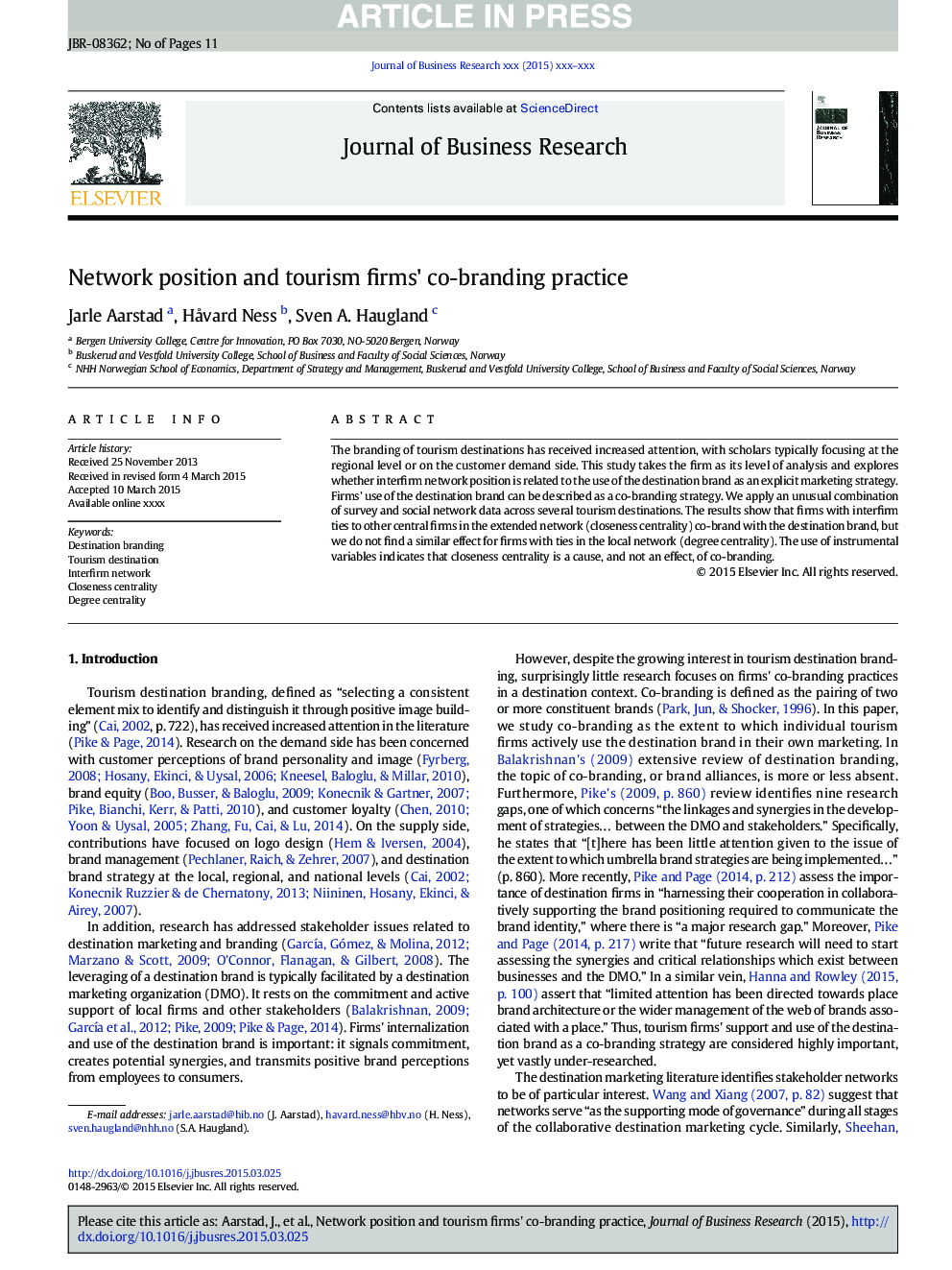| Article ID | Journal | Published Year | Pages | File Type |
|---|---|---|---|---|
| 10492974 | Journal of Business Research | 2015 | 11 Pages |
Abstract
The branding of tourism destinations has received increased attention, with scholars typically focusing at the regional level or on the customer demand side. This study takes the firm as its level of analysis and explores whether interfirm network position is related to the use of the destination brand as an explicit marketing strategy. Firms' use of the destination brand can be described as a co-branding strategy. We apply an unusual combination of survey and social network data across several tourism destinations. The results show that firms with interfirm ties to other central firms in the extended network (closeness centrality) co-brand with the destination brand, but we do not find a similar effect for firms with ties in the local network (degree centrality). The use of instrumental variables indicates that closeness centrality is a cause, and not an effect, of co-branding.
Related Topics
Social Sciences and Humanities
Business, Management and Accounting
Business and International Management
Authors
Jarle Aarstad, HÃ¥vard Ness, Sven A. Haugland,
